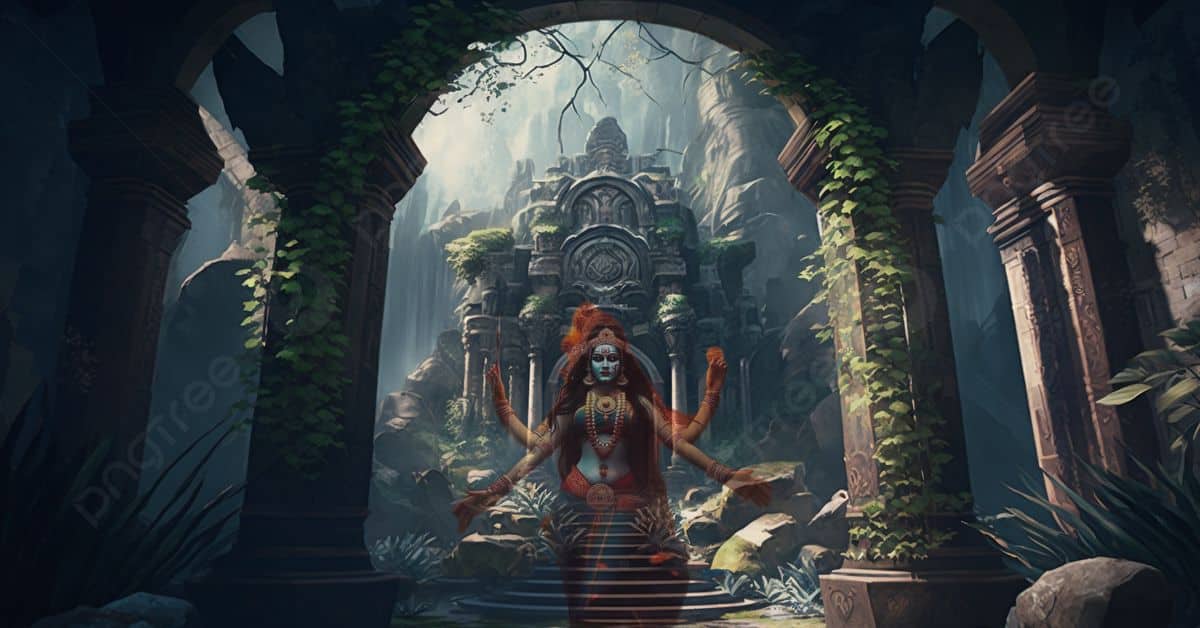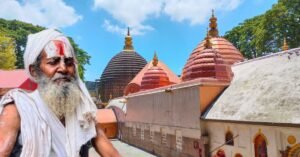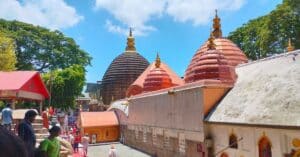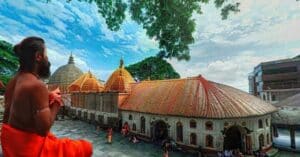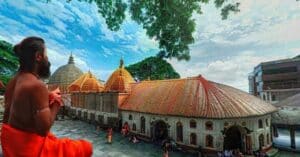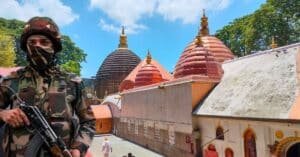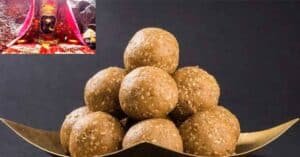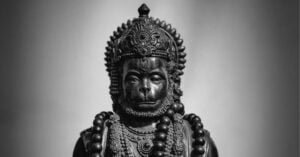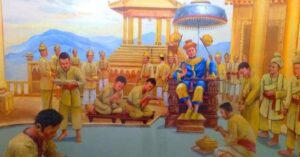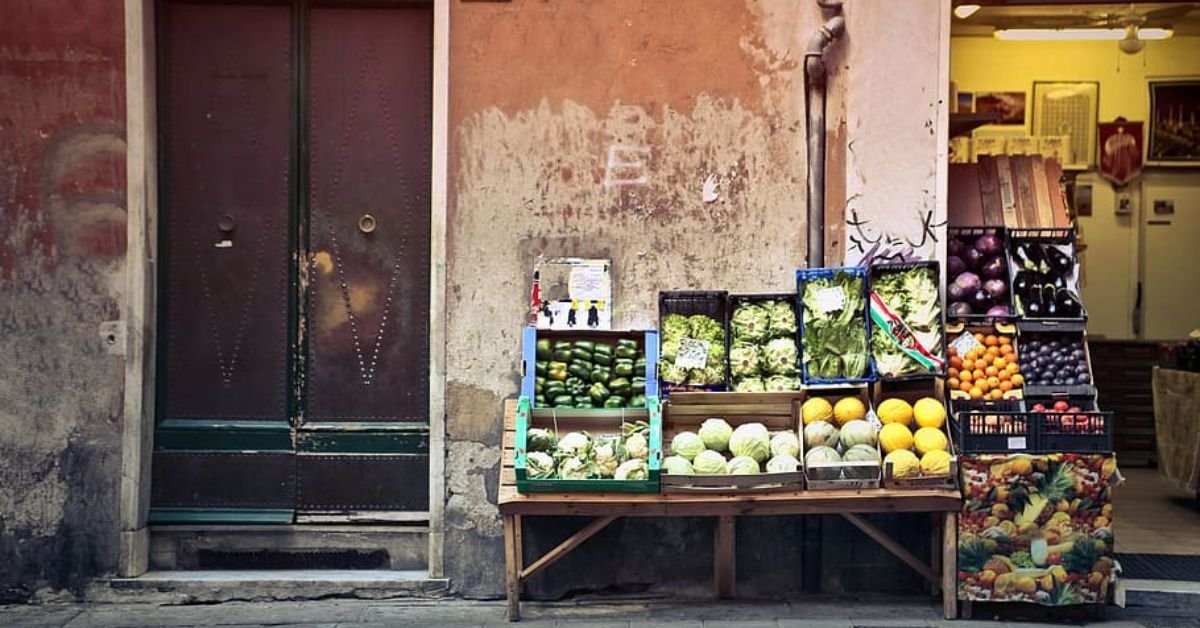The Kamakhya Temple is not just a temple, but a divine shrine of Hindu goddess Devi Sati (wife of Lord Shiva). It is one of the rarest shakti peethas of India. The temple is located in the heart of Guwahati city. This temple is dedicated to the Hindu goddess Kamakhya, also known as the Goddess of Desire, and is one of the most important pilgrimage sites in the region. This insightful blog explores all the myths and mysteries of Kamakhya temple.
Before we delve into this topic of “mysteries of Kamakhya temple”, for contextual purposes, you must know the mythological story of Kamakhya temple.
Why Kamakhya Temple is so Special and mysterious?
The Kamakhya Temple of Guwahati has been the center of tantricism, black magic and astrology since prehistoric times. Many legends are associated with temple. Till date, no one knows who built the original temple and actual reason for its existence. Limited history and documents are available to unravel these mysteries of Kamakhya temple. What we know about the history of the temple is all oral history, myth and legends.
There is no idol worship in Kamakhya Temple but the worship of female sexual organ(yoni/vagina) of devi sati. That makes the temple one of the unique temples of India.
The Mysterious Flow of Water at Garbhagriha
Most of the people visiting the temple, visit to see and pray before the sanctum sanctorum of the temple. It is the most mysterious place inside th temple. The place is dark and poorly lit. Inside this, the symbol of yoni is present. There is a constant flow of water to this symbol all round the year. It is believed it is the exact place where the yoni of Devi Sati fell on earth from the sky.
The Unknown Mekhela Ujua Path
There are two paths that leads to the Kamakhya temple. 99% of the people travelling to the temple follow the path is constructed with well built metalled roads and easily accesible by all types of vehicles. However, there is one path namely “Mekhela Ujua Path”. The path is made of ancient staircase which is more than hundreds of years old. Once you walk through this path, you would feel the mysteries of Kamakhya temple. On the way, you would be see huts of yogis and aghoris, people doing yoga and meditation. Allegedly, there are many caves in this route that are used by Yogis/tantrics to practice black magic till today.
The Mysterious Red Cloth or The Rakta Bastra
According to tradition, the cycle of menstruation of Maa Kamakhya Devi falls in June (preferably in the second or third week of June). During this time, the temple gate of Maa Kamakhya Temple is closed for three days.
During this period, the sculptured image of the Yoni of the Goddess is draped with a cloth. The cloth draped around the image is considered very sacred. It is commonly known as Kamakhya Devi Red Cloth or Ambubachi Cloth.
It is believed that a white cloth is placed around the culture of Yoni during the Ambubachi Mela. However, after three days the cloth turns red. No one knows the actual reason for it. Legend has it that the blood discharge of the Devi during her periods is reason behind it.
Mysterious Waters of Brahmaputra near The Kamakhya Temple
In general, the waters of Brahmaputra near the Kamakhya temple is muddy and full of silt. However, an unknown event occurs with these waters during the time of Ambubachi Mela. Just like the red cloth of Maa Kamakhya temple, the waters of Brahmaputra turns red. Not blood red, but red enough to be distinctive. Many associate this phenomenoa with the high iron content in the soil in Nilachal hill. But noone has been able to explian why this turns red during a particular period.
The Ritual of Animal Sacrifice
The ritual of animal sacrifice at the Kamakhya Temple in Assam, India, is an age-old tradition deeply rooted in the local culture and religious practices. Animal sacrifice, particularly of buffalo, goats, and sometimes pigeons, is performed daily near the main temple premises as an offering to the deity. Many priests and traditional practitioners believe that this ritual is essential for maintaining the divine balance and appeasing the goddess. They hold the belief that if the tradition were to be stopped, it could lead to adverse consequences or bring about disasters to the temple and its devotees.

